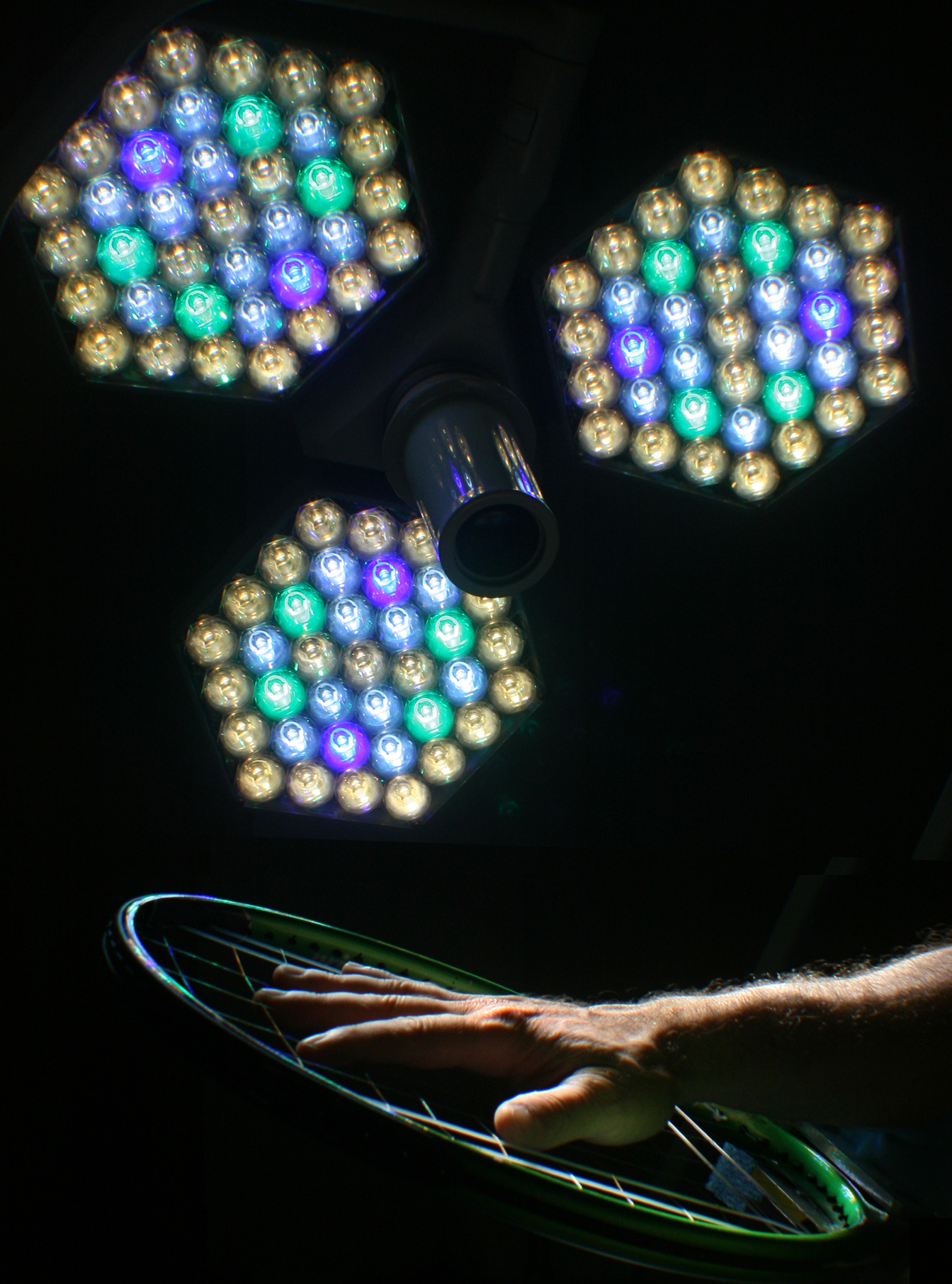Home > Research > NIBIB Intramural Labs > Laboratory of Bioengineering and Physical Science
E-mail this page 
Biomedical Instrumentation and Multiscale Imaging
Contents
Back to Top
BIMI Expertise
- Experimental and Instrument Design:
- Optical and analytical instrumentation
- Microfluidic device design and fabrication
- Electrical and electronic engineering
- Mechanical design
- Computer interfacing of instrumentation
- Sensitive Measurement Techniques:
- Atomic force microscopy and single molecule force spectroscopy
- Nano-optics, conventional optics, and laser technologies
- Fluorescence and optical spectroscopy
- Novel reporter molecules
- Mathematical Modeling:
- Complex data analysis
- Finite element analysis
- Statistical physics
- Bioinformatics and system biology
Back to Top
Intramural Research Projects
The LBPS Biomedical Instrumentation and Multiscale Imaging (BIMI) group provides resources for conception, design, and development of specialized instrumentation for clinical and laboratory research. BIMI scientists, who collaborate closely with other intramural research program investigators, focus on several major areas:
- Atomic Force Microscopy (AFM) can provide topographic images at nanometer resolution and can also measure the molecular forces and viscoelastic properties of biological structures. Single-molecule force spectroscopy (SMFS) is a specialized form of AFM focusing on high-precision and high-speed force/distance measurement underlying molecular structural folding and intermolecular interactions. BIMI is developing experimental instrumentation and theoretical modeling to permit the study and quantification of complex behavior of samples at cellular, subcellular, and molecular levels.
- Microfluidic Devices can potentially perform biochemical analyses faster and on smaller samples than current technology. In collaboration with researchers at the National Institute of Standards and Technology (NIST) and the LBPS Ultramicro Immunodiagnostics (UI) research group, BIMI is currently developing a flow-through device for quantitative, multi-analyte immunoaffinity detection of proteins in microliter-size samples. This technology will foster the development of similar microfluidic devices for a variety of scientific and clinical applications.
- Optical Detection for capillary and microchip systems typically requires custom design when looking at multiple spectral regions or device channels. BIMI is building a fixed-optics, multi-channel, multi-spectral detection system for polymer microfluidic devices, as well as a multi-color, laser-induced fluorescence detector for a capillary electrophoresis and micro-flow HPLC systems.
- Optical Imaging is a non-invasive technique used to monitor biological function, locate diseased tissue, or assess therapeutics in tissue or whole animals. BIMI has developed near-infrared instrumentation that uses laser excitation of fluorescent probes in combination with computational models of photon migration in tissue developed by collaborators in the National Institute of Child Health and Development (NICHD) to locate precise targeted sites. BIMI is also developing infrared instrumentation to assess organ functions during surgical procedures.
- Nano-Optics and Optical Nanoscopy is being adapted by our staff to break the current diffraction limit of conventional optical microscopy to achieve nanometric spatial resolution on biological samples and systems. To break this barrier, we are using multiple approaches, including hyperlensing using a new metamaterial; near-field scanning optical microscopy (NSOM); single-probe localization; saturated structured-illumination microscopy (SSIM); and multi-photon imaging in order to achieve real-time observation at 100 nm resolution or higher.
- Computer-controlled, custom instruments, which are oftentimes essential for much of BIMI's Intramural research, are developed and refined for projects such as laser-induced reaction kinectics, animal motion studies, and data analysis.
Back to Top
Accomplishments
- BIMI has established a core biological AFM facility. Our staff is extending the functionality of several AFM platforms toward multimodal measurements to yield more insights on biomolecules, their complexes, cells, and tissues. For example, we have integrated optical total internal reflection fluorescence (TIRF) microscopy with Bioscopy Z AFM, and we have constructed and significantly optimized a Raman TIRF AFM based on a LabRam spectroscopy and an XE-120 AFM. Over the years, our staff has had extensive experience applying such instrumentation to the investigation of a broad range of biomedical samples and systems.
- Laser capture microdissection (LCM) technology is a powerful tool that permits the clinical research investigator to select, capture, and transfer pure tissue samples as small as a single cell from a histopathology slide to a vial for analysis using molecular biology techniques. This technique and the initial prototypes were first developed within BIMI, and the technology has since been commercialized and is widely used in clinical pathology.
- cDNA microarray instrumentation, including printers and readers, are critical technologies for gene discovery that analyze gene expression in disease and other research investigations. BIMI engineers fabricate microarray instrumentation and strive to improve its sensitivity in order to answer more challenging research questions.
- BIMI developed instrumentation for analysis of chromosomal aberrations. A high precision, computer controlled, mechanical manipulator selects individual chromosome G-bands to permit preparation of chromosome probes, which act as unique markers of the G-band. Spectral karyotyping instrumentation identifies translocations, deletions, and other chromosomal abnormalities.
- BIMI has built instrumentation to perform real-time functional brain imaging and to localize lesions in patients undergoing craniotomy. Functional brain imaging requires highly specialized instruments for use in challenging environments such as high magnetic fields.
Back to Top
Meet the Staff
Paul Smith, Ph.D. - Chief and Research Physicist
Albert Jin, Ph.D. - Staff Scientist
Alexander Gorbach, Ph.D. - Staff Scientist
Allen Markowitz, MSEE - Electronics Engineer
Bryce Wiedenbeck, B.S. - Post-baccalaureate IRTA
Ed Wellner - Biomedical Engineering Technician
Emilios Dimitriadis, Ph.D. - Staff Scientist
Minhua Zhao, Ph.D. - NIH/NIST NRC Fellow
Nicole Morgan, Ph.D. - Staff Scientist
Pierre-Alain Auroux, Ph.D. - Post-doctoral IRTA
Svetlana Kotova, Ph.D. - Visiting Fellow
Wei-Min Liu, M.S. - Special Volunteer
Xuan Truong - Biomedical Engineering Technician
Back to top
|









